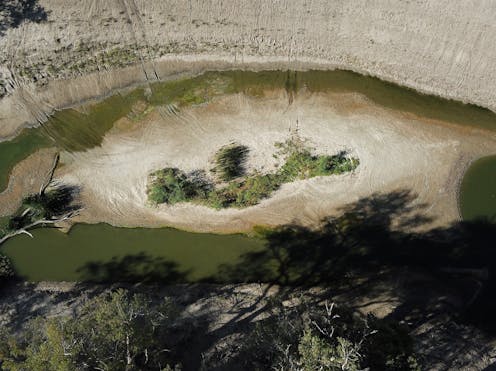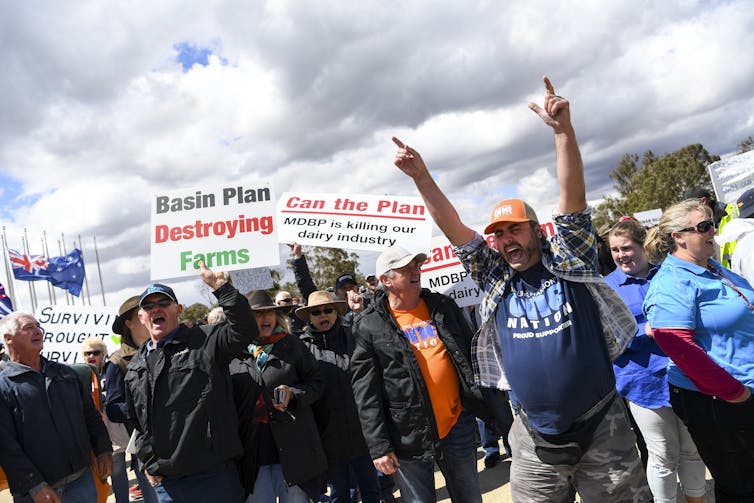
During the federal election campaign, Labor promised to future-proof Australia’s water resources. Now, new Water Minister Tanya Plibersek must deliver on the policy – one vital to securing Australia’s future.
Australia is already challenged by extremes of intense drought and severe floods, and these will be exacerbated as climate change progresses. Amid this, we must continue to feed a growing population and support important export industries, while leaving enough water for people to drink and for rivers to flow.
Many of the nation’s water policies are outdated and, in some cases, clearly ineffective. Over the past nine years of Coalition government, commitment to fix the problems has been sorely lacking.
Labor says it will right these wrongs. It’s a massive job. Here, I outline six actions the new government should prioritise.

What Labor promised
The Productivity Commission last year warned Australia’s water policy needs modernising and reform to meet future challenges.
One of Labor’s key promises was to establish a new National Water Commission – a body the Abbott Coalition government abolished in 2015.
Labor says the commission will drive water reform. One of its key functions will be to support renewal of the National Water Initiative.
That initiative was an agreement struck in 2004 between the Commonwealth and the states and territories on fundamental principles for sustainable water management. Water is principally a state responsibility, so the initiative articulated a nationally shared vision as a first step.
The Howard Coalition government negotiated the initiative and established the National Water Commission to oversee it. The Rudd and Gillard Labor governments maintained this focus.
But the commission’s abolition killed this momentum for water reform. With no dedicated body overseeing implementation, government commitment to the agreed principles has waned.
Read more: Grape growers are adapting to climate shifts early – and their knowledge can help other farmers

For example, the initiative requires that infrastructure proposals are found to be “economically viable and ecologically sustainable” before they proceed.
Despite this, state and federal funding was dedicated to the proposed Dungowan Dam in New South Wales, and federal funding to the Hells Gates Dam in Queensland, before a detailed business case or environmental impact assessment had been completed for either.
Labor will renew the National Water Initiative. This should involve a refreshed commitment between the Commonwealth and the states and territories, after several important updates to the agreement:
1. Consider climate
Australia desperately needs a water management strategy that responds to a changing climate. Current water sharing plans are based on past climate variability. But as climate change progresses, this historical experience will be less useful.
2. Secure the water interests of Indigenous people
Indigenous Australians must be more involved in water planning and granted much greater access to water for Indigenous cultural purposes. More attention must also be paid to Indigenous ownership of water resources.
3. Reform urban water management
Cities and towns need greater resilience to drought, bushfire and floods. An overhaul of drinking water safety, and wastewater and stormwater management, are also required to better protect public health and the environment.
In particular, water quality and reliability in some remote and Indigenous communities needs urgent attention.

What about the Murray-Darling Basin Plan?
The Murray Darling Basin Plan is due for full implementation by June 2024. Plibersek has much work to do if that deadline is to be met.
That brings us to the final three steps Labor should prioritise:
4. Complete water resource plans
Labor must work with the Murray Darling Basin Authority to ensure so-called “water resource plans” are completed and accredited. These plans, devised by the states, outline how water is to be shared between users and the environment.
NSW’s plans are three years late and holding back progress. The federal government must rectify this – including using “step in” powers to intervene if needed.
5. Prepare for two big reviews
A five-yearly review of the basin’s “environmental watering plan” is due in 2025. It will assess whether environmental water is being best used to benefit dependent ecosystems. The review is a major undertaking, and will require federal consultation with state governments, state and federal agencies, scientists, community and business groups and Indigenous people.
The federal government should also review the basin plan from 2026, with a view to adapting it to more frequent dry periods predicted under climate change.
6. Overhaul water markets
Water markets are central to the basin plan. Farmers are allocated water from the river system, and can choose to use it or sell it on water markets.
These markets need reform. A review last year by the Australian Competition and Consumer Commission found greater scrutiny and transparency was needed to ensure their effectiveness and improve community trust.
The ACCC recommended a new agency to oversee and regulate the water market. Labor could establish this agency or give such responsibilities to a new National Water Commission.

Water, water, everywhere
The water sector can contribute to meeting important goals across many policy areas – including the transition to net-zero emissions.
For example, wastewater treatment produces emissions including carbon dioxide, nitrous oxide and methane. But wastewater can also be a source of energy, such as producing biogases.
Water is essential to Australia’s emerging hydrogen industry. And in the shift to a circular economy, resources such as phosphorous, and clean water itself, will be increasingly recovered from wastewaters.
In all this, federal policy will be required. Labor must also overcome skills shortages – especially in engineering – and invest in research and development to ensure Australia’s water management is world-class.
All eyes are now on Tanya Plibersek at this crucial juncture. Let’s hope she’s the visionary and effective federal water minister Australia needs.
Stuart Khan receives funding from the Australian Research Council and previously received funding from the now-abolished National Water Commission. He is affiliated with the Australian Water Association, the Academy of Technology and Engineering, Engineers Australia, and the Royal Society of Chemistry. He was previously a member of the National Water Grid Advisory Body.
This article was originally published on The Conversation. Read the original article.







